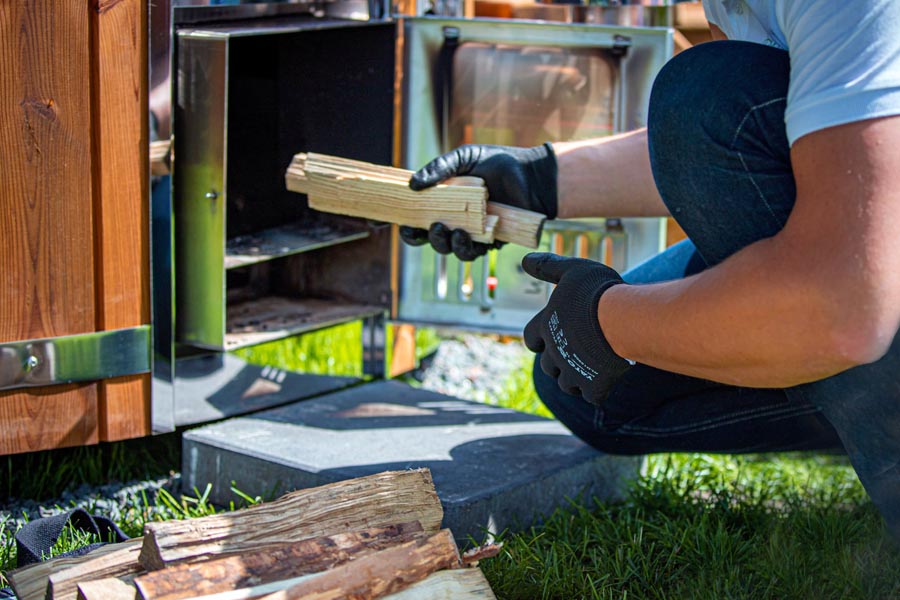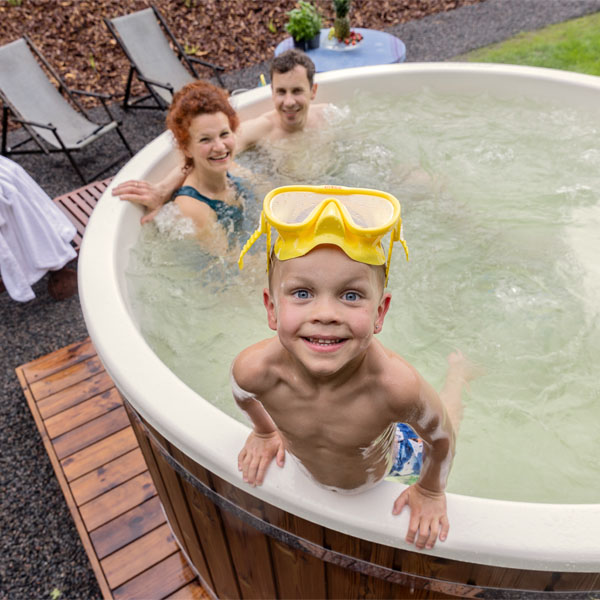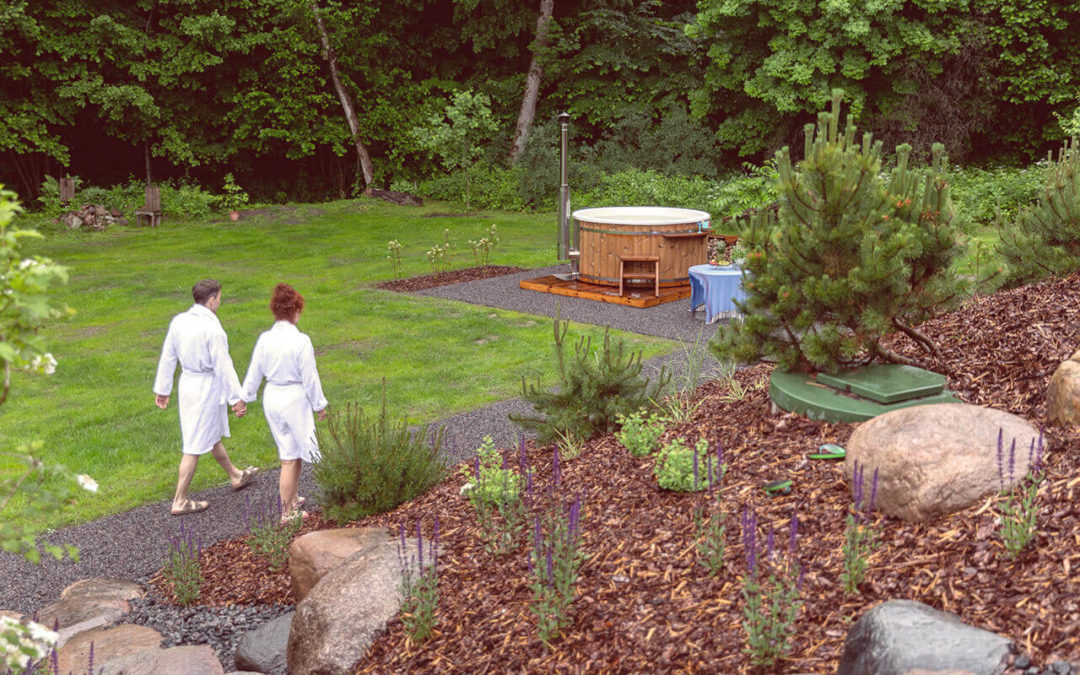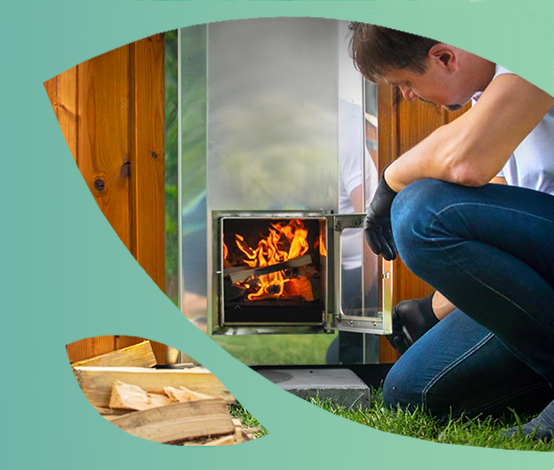Are you confused about what type of water heating to choose when purchasing a spa or a hot tub?
Wood-fired vs. electric, external vs. integrated.
Yes… Your head can easily start spinning while selecting the best option to help you enjoy the sensation of immersing in hot water to relax from any worries in life or physical tension.
Hopefully, this article on wood-fired vs. electric heaters for hot tubs will ease the strain, and you’ll be able to make an informed and confident decision.
What are the key factors to consider when choosing a type of heater for a hot tub?
While any type of heater will eventually do its job – heat the water in your spa or hot tub – the key parameters that may differ wildly are:
- Heating time
- Cost per use
- Sustainability
- Convenience
So let’s compare the two options to bring the water in your tub to the desired temperature.
1. How quickly will the water heat up?
Heating time will depend on the temperature outside as well as on the size of the tub which contains 1600 litres on average. A wood-fired heater is more powerful in this aspect compared to an electric one.
In summer, it will usually take 1-2 hours to heat up the water, and 2-3 hours in the cold season. To ensure the best heating result, however, you may want to follow the tips on how to heat a wood-fired hot tub.
An electric heater might need 12-24 hours to make the water steam in your garden. The exact heating time will depend on its power, the starting water temperature, the weather temperature, and the size of the tub.
Considering the heating time only, a wood-fired heater may be at least 6 times more efficient than an electric one.
2. How much will it cost to use different types of heaters?
A wood-fired heater requires nothing but firewood and a box of matches.
There’s no way to make precise estimates of how much the logs would cost to heat your hot tub since someone might collect the wood for free, and others will buy it for $20 from a garden centre.
In the case of an electric heater, the costs are a bit more predictable, although they will also vary. A standard 6kW electric heater will use 6kWh in every operating hour.
You’ll have to multiply that by the actual number of hours of heating (12-24), and then multiply it by the cost per kWh from your power supplier.
3. Which type of heating is more eco-friendly?
Around 20 percent of the electric power consumed in the Australia is generated from renewable supplies, and the number keeps increasing. That is nice and positive.
However, the controlled amount of wood that you’ll use in a wood-fired heater is an entirely renewable source of energy.
One thing we must mention, though, is that you must check the local regulations if burning wood is allowed at all where you live. Plus, you need to take into account any sessional restrictions that may apply in your area.
There are certain restrictions on producing smoke in residential areas, and you might want to be sure about that before choosing a wood-fired heater.
4. Which heater is more convenient to use?
We’re basically discussing a press of a button vs. the ritual of building up a fire.
Operating an electric heater offers the simplicity of a press of a button which might be an appealing factor for some of us. A wood-fired heater will make you do some prep-work, and you’ll have to take care of the ashes every now and then.
But many people actually love the ritual and the fun they can have with the children in their family when picking, chopping, sorting, and burning firewood. Or the uninterrupted stillness when they do it alone…
An electric heater, on the other hand, is the choice of those who value the simplicity offered by a press of a button. If you’re that type of person, and if you can wait longer to prepare your spa, then an electric heater might bring more benefits to you.
The Verdict
The comparison in four key areas showed us more advantages of a wood-fired heater.
While an electric option offers a convenient operation, a wood-fired heater offers better operating costs, considerably quicker heating, and it’s a more sustainable option.
Plus, the romance of the whole process from collecting firewood to striking a match and stoking the burning logs.
Weighing all the possible options and considering our customers’ feedback and preferences, we chose to use wood-fired integrated heaters in Gardenvity hot tubs to ensure you have your sensual experiences up, and to help keep your utility bills down.
Forgive the bias, but the wood-fired heater is our recommendation.
Happy hot tubbing!




